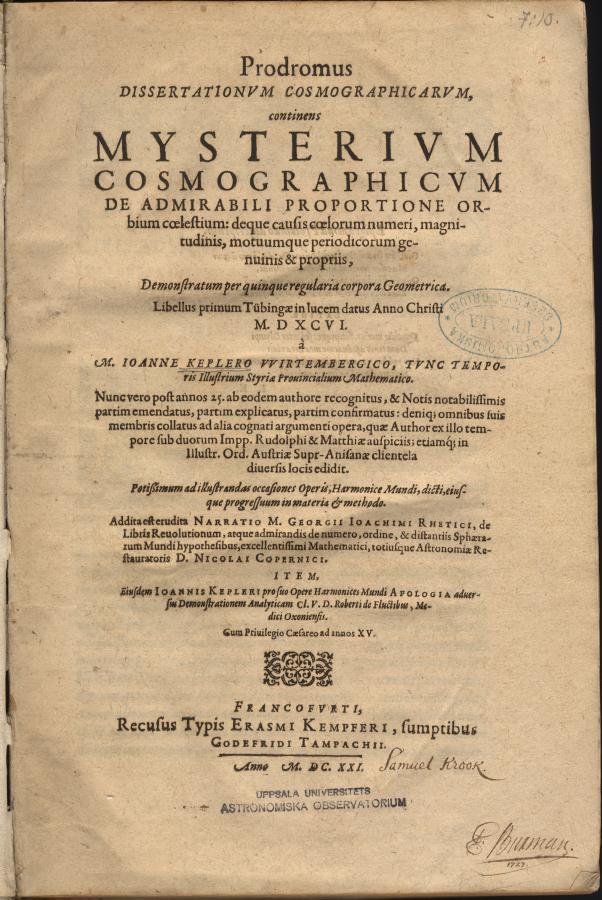3.3
Italian astronomer Copernicus, Danish astronomer Tycho
and after that, comes German astronomer Kepler; All in Europe .
This is why; Europe is called the gateway to universal knowledge. Even today,
Europe is known as the paradise of knowledge to the learners.
In December 27, 1571 in some corner of south-west
Germany
Kepler’s family life was full of sorrows. He was
born with poor health. His father was an on-rent-soldier. He was lost when Kepler
was young, some say, his father died. His mother was a rude lady and thus, she
was insulted by the society and even once, his mother was accused of being a
wicked witch. Kepler freed his mother from this blind religious view.
Kepler’s education life was not so good enough,
as he was poor. But he was talented and studied against all odds. This
struggling hero wanted to become a priest but became an astronomer by accident.
Kepler was a teacher in some school of
Grudge , Austria
When he became priest, he was told to make a
calendar which can predict the future about climate, politics etc in
astrological method. Kepler was lucky (!) as his major astrological predictions
about climate became true in 1595 and thus, he became famous as an astrologer.
Point to be noticed that in his age, astronomy and astrology were not differentiated.
Once, Kepler was explaining his students about
the transit of Jupiter and Saturn. To explain it to them, he drew a complex
geometrical image on the board. He made a theorem- the “Kepler’s Theorem”. The
Revolutionibus of Copernicus attracted him, because the sun-centered model
gave him a divine (!) feeling. Researching on that book, Kepler published his
first book, Mysterium Cosmographicum, in English- The Mystery of
Cosmos. In today’s scale, the book had nothing special. Kepler sent the
book to Tycho and Galileo. They admitted the talent of Kepler, though he had
not that intellect that he needed to be an astronomer. One accident changed his
identity from a famous astrologer to a famous astronomer. In his book he
suggested that there are five perfect geometrical shapes in the structure of
the universe- Cube, Quadrahedron, Icosahedron, Octahedron and Dodecahedron.
 |
| Cover: Mysterium Cosmographicum |
In 1601, Tycho died and Kepler was replaced in
his post. Tycho’s death was an accident which gave Kepler the opportunity to
become a royal mathematician. Tycho’s observation and research came to his
hand. The Rudolfin Table was modified by him. He also analyzed the
motion of planets. As he believed in Copernican concept, Tycho’s parents cased
on him and refused him to use Tycho’s instruments for research. Kepler handed
over Tycho’s instruments to his family but kept his books. Kepler monitored the
motion of Jupiter for 4 years. In 1606, he revealed the mystery of Jupiter’s
orbit. He found that, the orbit is elliptical. It was a ground-breaking discovery
in that age. Kepler bade goodbye to two old concepts- one, circular motion of
planets; two, regular motion of planets.
Kepler saw that, the orbit of planet was
elliptical and at a focus point was the star, the sun. Near the focus, planet
moves fast. On the other hand, far from the focus, planet moves slow. This
incident cancelled the concept of circular regular motion of planets.
In 1609, Kepler published his concept in his book
Astronomia Nova, in English- The New Astronomy. In this book Kepler
tried to give concept of an invisible energy that holds the planets on their
orbit. This concept can be referred to the concept of gravity.
 |
| A glance of Harmonices Mundi |
 |
| Cover: Astronomia Nova |
He modified and corrected the Rudolfin Table,
published it in 1628 and dedicated it to Tycho. This table was a great
contribution of Kepler which shows that Copernican sun-based universe model is
accurate. Copernicus might have wanted this kind of table as a proof of his
concept.
Kepler died on November 15, 1630. He was lucky as
he did not face any religious tortures as he lived in Europe. Point to be
noticed that, church had no power in Europe that time.

No comments:
Post a Comment